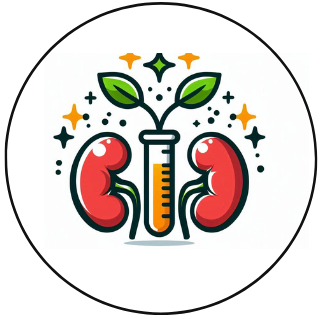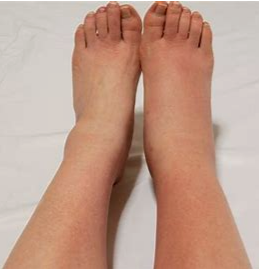Title: How to Avoid Fluid Retention and Swelling While Managing Kidney Disease
Kidney disease can lead to a number of complications, one of the most common being fluid retention, which causes swelling (edema) in various parts of the body. Managing fluid retention is essential not only for comfort but also to prevent serious complications such as high blood pressure and heart failure. Here, we’ll discuss actionable steps to reduce swelling while maintaining kidney health. Whether you’re in the early stages of kidney disease or managing chronic kidney disease (CKD), these tips will help you stay on track.
What Causes Fluid Retention in Kidney Disease?
Kidneys play a key role in regulating fluid balance in the body. When they’re not functioning properly, they struggle to eliminate excess fluids, which can build up and cause swelling, particularly in the legs, ankles, and feet.
In addition to the direct impact on your comfort, untreated fluid retention can also make it harder for your heart to pump blood efficiently. This creates a vicious cycle that can worsen both kidney and heart health.
1. Limit Sodium Intake
One of the biggest contributors to fluid retention is a high-sodium diet. Sodium encourages your body to hold onto water, making swelling worse. To minimize sodium:
- Avoid processed foods: Processed foods like canned soups, deli meats, and frozen meals are loaded with hidden sodium.
- Check labels: Look for low-sodium options and foods labeled “no salt added.”
- Cook fresh: Preparing meals at home allows you to control how much salt goes into your food.
Check out these low-sodium seasonings, meal plans and low-sodium cookbooks to help you enjoy tasty low-sodium, kidney friendly meals.
2. Monitor Fluid Intake
For people with advanced kidney disease, limiting fluid intake is crucial to avoid overloading the kidneys. Excess fluid can lead to swelling and make dialysis treatments less effective for those who require them. It’s important to:
- Track your fluid intake: Work with your healthcare provider to establish a daily fluid limit.
- Be mindful of “hidden” fluids: Foods like soups, ice cream, and even some fruits contain significant amounts of water.
These water bottles with built-in measurement features will help you monitor your daily fluid intake, which can help with fluid retention and swelling.
3. Wear Compression Socks
Compression socks can provide relief from swelling in the legs and ankles by promoting circulation. These specially designed socks apply gentle pressure, which helps prevent fluid from pooling in the lower extremities.
When shopping for compression socks, be sure to choose the right level of compression as recommended by your healthcare provider. These socks can also be helpful during air travel or prolonged periods of sitting.
The compression socks, you’ll find in this link, are specifically recommended for people with kidney disease or circulation problems and will help manage the swelling in your legs and ankles.
4. Increase Potassium Intake (if Allowed)
While high potassium levels can be dangerous for those with kidney disease, in some cases, your doctor may recommend moderate potassium intake to balance sodium levels and reduce fluid retention. Potassium helps your body get rid of excess sodium, which in turn helps manage swelling.
However, it’s critical to check with your doctor before adjusting potassium levels in your diet.
After consulting with your health professional, check out these kidney friendly potassium supplements.
5. Exercise Regularly
Exercise is an excellent way to improve circulation and reduce fluid retention. Low-impact activities like walking, swimming, or gentle yoga can help move fluid through your body, alleviating swelling in your limbs. Be sure to engage in activities that are safe for your health status.
Check out these kidney-friendly work out equipment ideas that are designed for gentle exercise at home.
6. Take Prescribed Medications
Diuretics, often referred to as “water pills,” are medications that help remove excess fluid from the body. While they can be effective, they must be used under the supervision of a healthcare provider, especially for those with kidney disease, as improper use can lead to dehydration and electrolyte imbalances.
Always follow your healthcare provider’s advice on medications and fluid management.
Conclusion
Managing fluid retention and swelling is a key aspect of living with kidney disease. By making adjustments to your diet, staying active, and following medical advice, you can significantly reduce symptoms and improve your quality of life.
For those looking to take proactive steps, consider integrating kidney-friendly products and tools into your daily routine. Whether it’s a low-sodium meal plan, compression socks, or a water-tracking app, these small changes can make a big difference in how you manage your fluid levels.
Don’t forget to check out our recommended products designed to help you stay in control of your kidney health.
low-sodium seasonings and cookbooks
Potassium supplements (follow Dr’s recommendation.)
Disclaimer: Some of the links included are affiliate links. Purchasing from an affiliate link will not add any cost to you, but may allow a small commission to kidneyfreshfuel.com, which allows us to continue to bring you quality information.
Meta Description (SEO): Learn how to avoid fluid retention and swelling while managing kidney disease with these practical tips. Discover kidney-friendly diets, products, and exercises.

